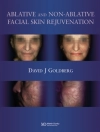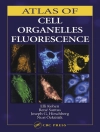The aim of this book is to provide a comprehensive review of the use of Transcranial Direct Current Stimulation (t DCS) in different psychiatric conditions. Here we review t DCS clinical studies employing different types of design (from single-session t DCS studies to randomized clinical trials) as well as studies evaluating the impact of t DCS in neurophysiological, behavioral and brain imaging outcomes.
Although the understanding about physiological foundations and effectiveness of clinical therapies of psychiatric diseases has been considerably increased during the last decades, our knowledge is still limited, and consequently psychiatric diseases are still a major burden to the individual patient and society. Recently, interest in pathological alterations of neuroplasticity in psychiatric diseases as a critical condition for development, and amelioration of clinical symptoms increased, caused by the fact that new tools, such as functional imaging, and brain stimulation techniques do allow to monitor, and modulate these phenomena in humans. Especially non-invasive brain stimulation techniques evolved as an attractive potential new therapeutic tool. The interest in non-invasive brain stimulation has grown exponentially in the past 25 years, with the development of non-pharmacological, neuromodulatory techniques such as t DCS and repetitive transcranial magnetic stimulation (r TMS). TDCS, although even newer than r TMS, has attracted considerable attention in both basic and clinical research scenarios. In the context of clinical research, t DCS is being increasingly investigated as a novel treatment tool for several psychiatric disorders, such as major depression, schizophrenia and neurocognitive and substance abuse disorders.
Transcranial Direct Current Stimulation in Neuropsychiatric Disorders – Clinical Principles and Management intends to serve as a practical guide on the field, attracting the interest of psychiatrists, neurologists andneuroscientists with little or no experience with t DCS, as well as those with a background on t DCS who want to increase their knowledge in any particular psychiatric condition.
สารบัญ
Part I Introduction And Mechanisms Of Action.- 1 Historical Aspects Of Transcranial Electric Stimulation.- 2 The New Modalities Of Transcranial Electric Stimulation: Tacs, Trns And Other Approaches.- 3 Physiology Of Transcranial Direct And Alternating Current Stimulation.- 4 Computer-Based Models Of Tdcs Of Tacs.- 5 Animal Studies In The Field Of Transcranial Electric Stimulation.- 6 Cortical Inhibition And Excitation In Neuropsychiatric Disorders Using Transcranial Magnetic Stimulation.- 7 Neurocognitive Effects Of Tdcs In The Healthy Brain.- 8 Transcranial Direct Current Stimulation In Social And Emotion Research.- 9 Multimodal Association Of Tdcs With Electroencephalography.- 10 Tdcs And Magnetic Resonance Imaging.- 11 Target Engagement With Transcranial Current Stimulation.- 12 Cerebellar And Spinal Tdcs.- Part II Applications Of Tdcs In Neuropsychiatric Disorders.- 13 Mood Disorders.- 14 Schizophrenia.- 15 Obsessive-Compulsive Disorder, Anxiety Disorders And Post-Traumatic Stress Disorder.- 16 Neurodegenerative Cognitive Disorders.- 17 Impulsivity And Substance Use Disorders.- 18 Epilepsy.- 19 Pain Syndromes.- 20 Stroke.- 21 Disorders Of Consciousness.- Part III The Clinical Use Of Tdcs.- 22 Safety And Tolerability.- 23 Home-Based Tdcs: Design, Feasibility And Safety Considerations.- 24 Ethical Aspects Of Tdcs Use In Neuropsychiatry And The Risk Of Misuse.- 25 Regulatory Aspects.- 26 Clinical Research And Methodological Aspects For Tdcs Research.
เกี่ยวกับผู้แต่ง
Andre R Brunoni – MD; Ph D. Director of the Neuromodulation Service –Institute of Psychiatry, University of São Paulo, Brazil. His research involves the use of non-invasive brain stimulation techniques, such as TDCS, TMS and “deep” TMS in the treatment of mental disorders, such as mood disorders, OCD and schizophrenia. Dr. Brunoni is a very productive and active researcher, with more than 80 records on Pubmed and several receives grants from Brazilian and international institutions. Fellowships at Harvard Medical School (2008 – Felipe Fregni as supervisor) and in Ospedale Maggiore Policlinico (Milan, Italy; 2009, Alberto Priori as supervisor), both in non-invasive brain stimulation.
Michael A. Nitsche – MD; LP; Ph D. Associate Professor at the department of Clinical Neurophysiology of the Georg-August-University, Goettingen; head of the laboratory of Systemic Neurosciences. He published more than 150 papers in international journals, received grants from institutions such as the German Research Foundation. Member of the editorial board of The Journal of Neuroscience, Clinical Neurophysiology, and Restorative Neurology and Neurosciences. He received the Alois Kornmüller, and Richard-Jung Awards by the German Society of Clinical Neurophysiology, and the GESET Award by the German society of Electrostimulation and Electrotherapy.
Colleen Loo – Professor of Psychiatry at the University of NSW and leads the Brain Stimulation Research Team at the Black Dog Institute in Sydney. Her research is focused on improving treatment approaches in Electroconvulsive Therapy and developing novel physical treatments, particularly for depression. She chaired/co-chaired the Position Statements (clinical guidelines) on ECT and TMS in Australia. She is the first international member to be appointed to the Executive Committee of the International Society for ECT and Neurostimulation. She founded and directs an Advanced/Refresher ECT Course and TMS course in Sydney.












